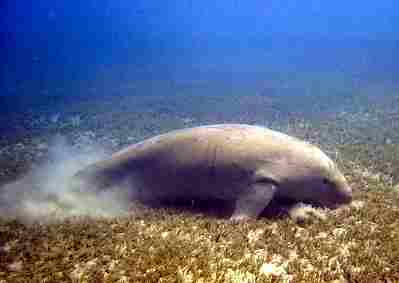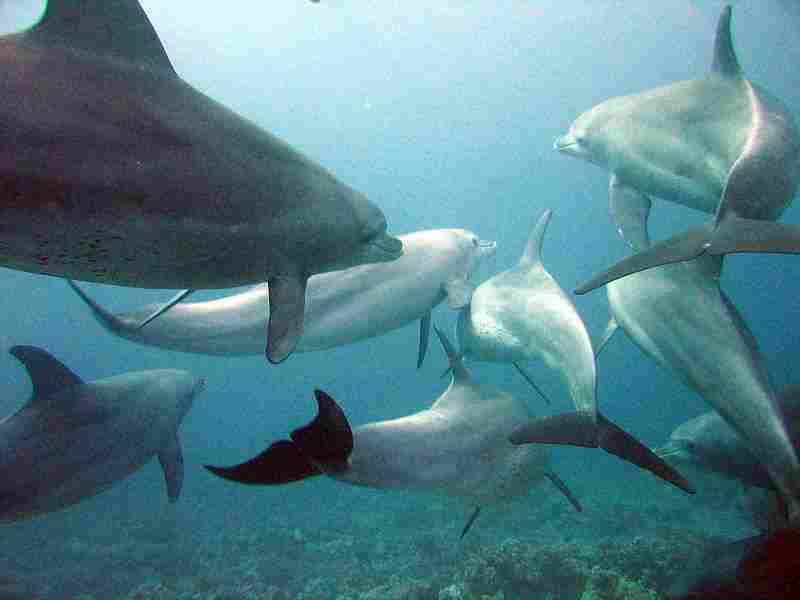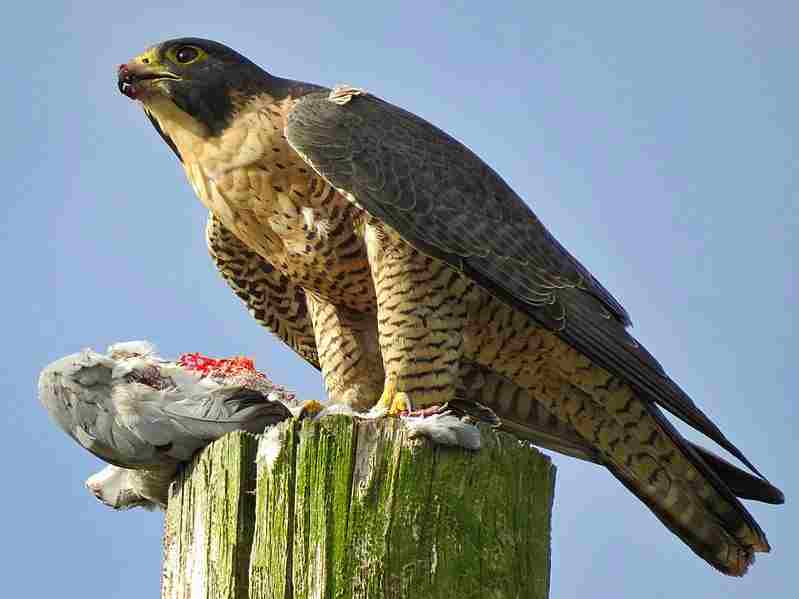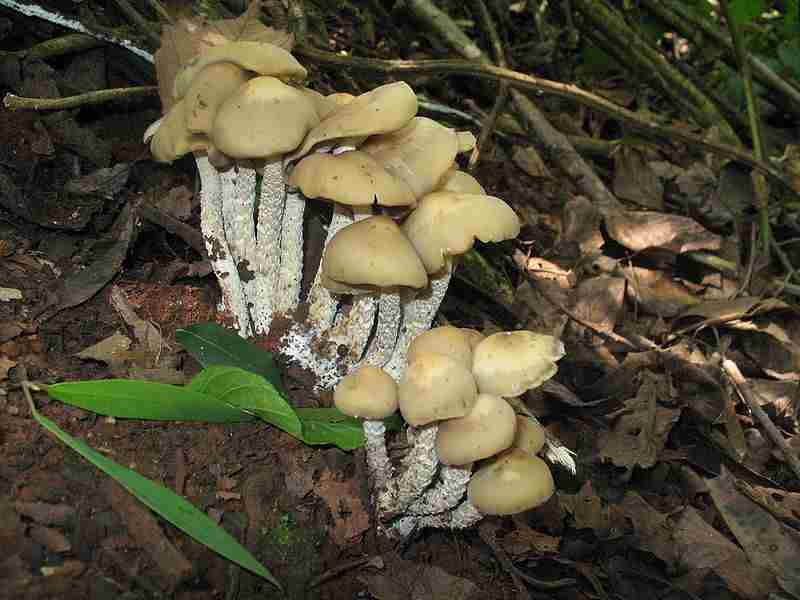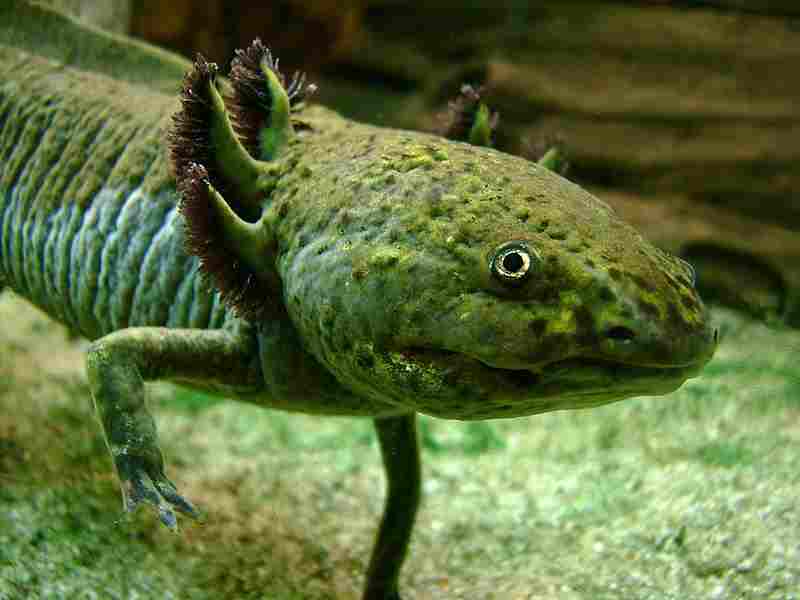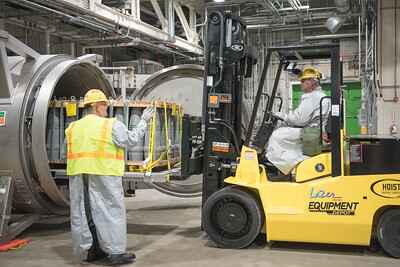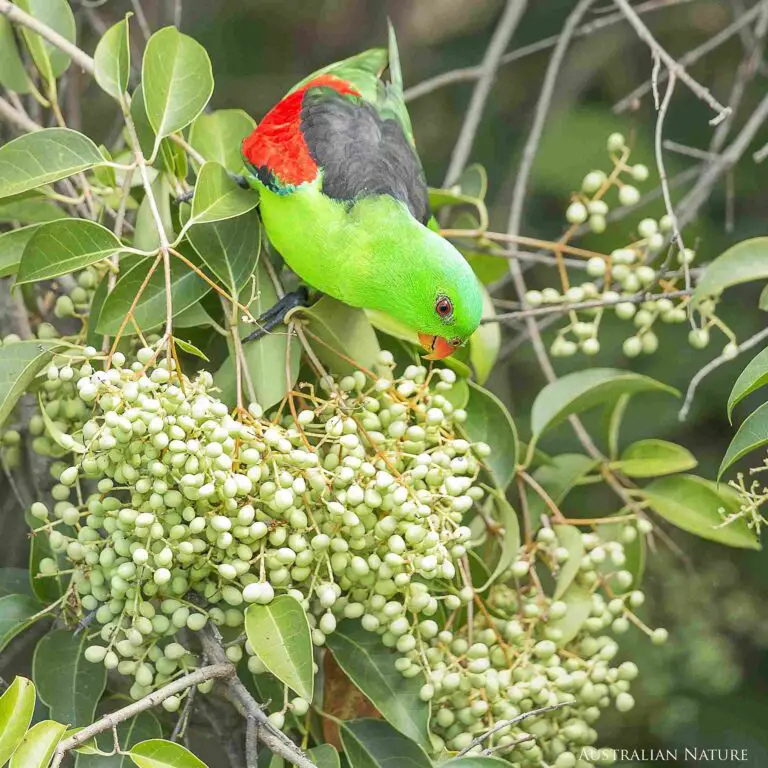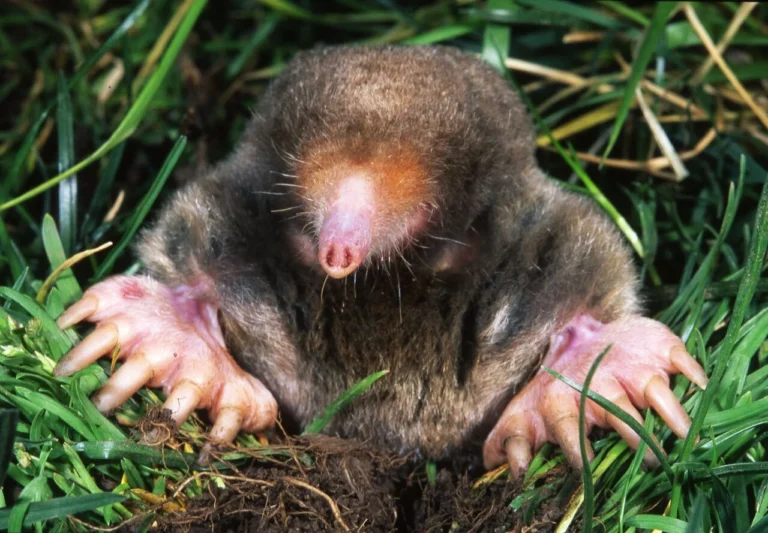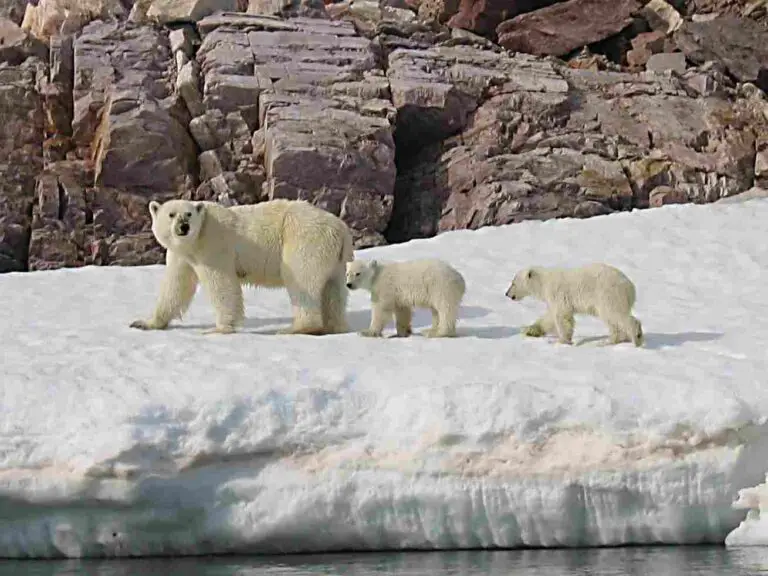5+ Biotic Factors in the Pacific Ocean Ecosystem and Their Contributions
Biotic factors in the Pacific Ocean are; autotrophs/producers, herbivores, carnivores, omnivores, decomposers; as well as trophic interactions between/within the various groups.
This article discusses biotic factors in the Pacific Ocean and their contributions to the ecosystem, as follows;
1). Autotrophs/Producers: one of the Biotic Factors in the Pacific Ocean
Autotrophs, also known as producers, are a critical biotic component of the Pacific Ocean's ecosystem.
These organisms play a determinant role in the marine food web, by capturing and converting solar energy (in the form of light) into organic matter/biomass [4]. Some key autotrophs in the Pacific Ocean and their contributions are discussed in this section.
Contributions of Pacific Ocean Primary Producers/Autotrophs
Primary producers in the Pacific Ocean include; phytoplankton, seagrasses, macroalgae (like kelp), and some species of bacteria. They contribute immensely to sustainability of the ecosystem by ensuring a continuous supply of bioenergy derived through the conversion of solar energy and inorganic reagents (carbon dioxide, water).
Phytoplankton can be described as microscopic, photosynthetic organisms that typically float near the surface of the water column in aquatic ecosystems; including freshwater bodies like rivers, streams, lakes and ponds; and saltwater bodies like oceans [2].
They are key producers in the Pacific Ocean, utilizing sunlight to convert carbon dioxide and nutrients into organic compounds. Phytoplankton constitute the base of the oceanic food chain, providing an invaluable source of energy for herbivorous, omnivorous and carnivorous organisms (both directly and indirectly). They also contribute significantly to the global oxygen cycle, by releasing oxygen as a byproduct of photosynthesis.
Seagrasses are marine vascular plants that grow in shallow coastal areas of the Pacific Ocean [7].
It must be noted that both vascular and non vascular plants can be found within the Pacific marine biome, although the former group (vascular halophytes) are more prominent in terms of biomass production.
Seagrasses are important autotrophs because of their ability to photosynthesize, thereby producing organic matter that supports various herbivorous species. In addition, seagrass beds provide important nursery habitats for juvenile fish and other marine organisms.
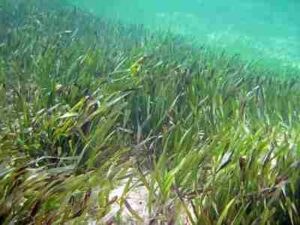
Kelp is a type of brown macroalgae that is found mostly in cold and shallow areas of the Pacific Ocean, especially along the coastlines, and on the margins of rocky shores. They form kelp forests, which are highly productive ecosystems, and within which they serve as keystone primary producers and ecosystem engineers [9]. They offer shelter and food for a diverse range of marine organisms, including fish, invertebrates like mollusks and crustaceans, and mammals like sea otters.
Asides kelp, various types of algae, including green and red, micro and macro-algae, are autotrophic producers in different parts of the Pacific Ocean. These algae contribute immensely to primary production, by producing food to support herbivores and other organisms in the oceanic food web. For example, red algae are a common food source for herbivorous fish.
Some classes of archaea and bacteria in the Pacific Ocean are chemosynthetic autotrophs. They utilize chemical reagents and reactions, such as the oxidation of sulfur compounds from hydrothermal vents, to synthesize sugar molecules [10]. These organisms are usually found in extreme environments and constitute the foundation of unique ecological zones around deep-sea vents.
2). Herbivores in the Pacific Ocean
Herbivores that inhabit the Pacific Ocean, play a critical role in the maintenance of the health and equilibrium of marine ecosystems. These organisms are called primary consumers, because they feed mainly on autotrophic organisms and materials, including algae and seagrasses. In the following subsection, some herbivores found within the Pacific Ocean and their contributions are discussed.
Pacific Herbivores and their Contributions to the Ecosystem
Herbivores in the Pacific Ocean include sea hares, dugongs, parrotfish, abalones, green sea turtles, and manatees. Sea urchins, which are often listed among oceanic herbivores, are rather omnivores, whose diet is often dominated by autotrophic biomass due to its availability. They are briefly mentioned in the subsequent discussion here.
Sea hares are a groups of marine gastropod mollusks which are known for their distinctive, segmented morphology and herbivorous feeding habits. They consume various types of algae and are very effective in the control of algal growth, preventing overgrowth that can suffocate and deprive coral reefs, among other negative ecologic and environmental impacts.
Dugongs are large marine mammals that are closely related to manatees. They are primarily herbivorous and survive by grazing on seagrass beds in coastal areas of the Pacific Ocean [1]. Dugongs help to maintain the vitality and diversity of seagrass microhabitats by preventing overgrowth.
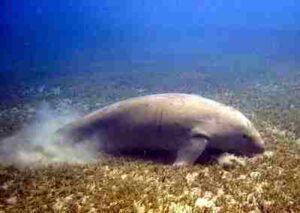
Parrotfish are colorful reef-dwelling fish that occur in the Pacific Ocean. They are prominent primary consumers on coral reefs, where they feed on algae and (in the process) coral polyps. Their feeding activities can also help regulate algae growth on reefs, thereby promoting coral health and development. It must be noted that parrotfish are not strictly herbivorous (as they may exhibit occasional omnivorous behavior) but rather consume autotrophic biomass as a preferred food source.
Abalones are marine herbivorous snails that feed on various types of halophytes and algae. They are active grazers and contribute to the balance of algae populations especially in rocky coastal areas.
Sea urchins are omnivorous invertebrates that are often listed among herbivores, because they graze heavily on microalgae, kelp, and seagrasses [3]. They are known for their ability to control the composition of underwater autotroph communities through their grazing activities.
Green sea turtles are iconic reptilian herbivores in the Pacific Ocean. They mainly feed on seagrasses along with some types of algae. The grazing activities of these turtles help maintain the regeneration capacity of seagrass beds, and prevent the overgrowth of such marine autotrophs.
Manatees are not exclusive to the Pacific Ocean, or the marine ecosystem. Rather, they are among the most dominant mammalian underwater herbivores globally. These mammals graze on vegetation in various aquatic habitats, including brackish mangrove swamps, shallow marine environments, and freshwater bodies like rivers, within which they contribute to the balance of biotic and abiotic resources.
The largest underwater herbivore in the world is the manatee. Manatees can grow to lengths of 4 meters (over 13 feet) and weigh up to 1,300 kilograms (about 2,870 pounds). They are often referred to as "cows of the sea" due to their large size and predominantly herbivorous diet, which includes seagrasses and other aquatic plants.
Manatees play an important role as primary consumers in the ecosystems they inhabit, by preventing overgrowth of seagrass beds and maintaining the regenerative process of aquatic plants.
3). Carnivores: one of the Biotic Factors in the Pacific Ocean
Carnivores in the Pacific Ocean can be described as a diverse group of marine predators that occupy a distinctive position in the marine food chain.
These carnivorous species feed on a variety of lower organisms that serve as their prey, and which may include marine mammals, fish, macroinvertebrates, and zooplankton. In this section, some carnivores found in the Pacific Ocean and their contributions, are discussed.
Pacific Ocean Carnivores and their Ecologic Contributions
Carnivores in the Pacific Ocean include; great white sharks, killer whales (orcas), blue whales, tuna, and steller sea lions.
Great white sharks are apex predators in the Pacific Ocean, and are even often considered the most dangerous animals in the ocean.
They are effectively involved in maintaining the vitality of marine ecosystems by regulating the populations of the prey species on which they feed. Their presence helps to control the populations of lower marine animals like seals, sea lions, and fish, preventing overpopulation and potential resource depletion.
Killer whales, alternatively referred to as orcas, are the largest members of the Delphinidae family and are considered the marine biome's top predators. They are highly intelligent organisms and have diverse diets, that include fish, mollusks, and other marine mammals. Orcas contribute to the equilibrium of resource availability/distribution in marine ecosystems by controlling the populations of prey organisms.
Blue whales are the overall largest animals on Earth, and are also known to be filter-feeding carnivores. While these mammals primarily feed on krill and other small planktonic animals, they are still considered prominent carnivores for the scale and strategy of their feeding. Blue whales play a key role in nutrient recycling, by redistributing nutrients from their food materials, through their feces, to the benefit of both autotrophs like phytoplankton and the overall marine food web.
Various species of tuna, such as yellowfin and bluefin tuna, are among the carnivorous fish found in the Pacific Ocean. They function as top predators in the pelagic zone, and play a prominent role in controlling the populations of smaller fish and mollusks, as well as zooplankton like krill which they less-commonly consume. Tuna are also important commercially harvested species [6].
With regards go carnivorous fish, the Pacific Ocean is home to numerous shark species, including the great white shark discussed earlier. Sharks are generally apex predators that help to maintain the balance of marine ecosystems by preventing population explosions of prey species. They thereby contribute to the health of coral reefs and other underwater habitats.
Leatherback sea turtles are reptiles that feed primarily on jellyfish, which they supplement with squids, fish, and crustaceans. They help control jellyfish populations, preventing them from becoming overly abundant and potentially disrupting marine ecosystems. Leatherback sea turtles are in fact omnivorous, as they also consume seaweeds. However they are discussed here due to the overwhelming dominance of jellyfish in their typical diet.
Steller sea lions are carnivorous marine mammals that primarily feed on fish, such as salmon, Pacific cod, flatfish and herring. They are among the top predators in their ecosystems and help regulate fish populations.
Biggest Predator in the Pacific Ocean
The title of the biggest predator in the Pacific Ocean could be attributed to several organisms, including great white sharks and killer whales. These apex predators are physically imposing, have few natural predators themselves and are effective in regulating marine food webs. The distinction of the "biggest" predator can depend on multiple factors such as size, feeding capacity, hunting behavior, and ecological impact.
4). Omnivores in the Pacific Ocean
Omnivores in the Pacific Ocean are a diverse and resilient group of marine organisms that have adapted to consume both plant and animal matter.
Their ability to feed on a broad variety of food sources, enables these organisms to function as effective biotic tools in nutrient cycling and ecosystem dynamics. Here, some omnivores found in the Pacific Ocean and their contributions to the ecosystem are discussed.
Pacific Omnivores and their Ecologic Contributions
Omnivores in the Pacific Ocean include; blue crabs, bonnethead sharks, sea turtles, lobsters, and opaleye fish.
Blue crabs are omnivorous crustaceans that are found in the Pacific Ocean. They are known to consume a wide range of food materials, including plants, algae, and dead fish.
Blue crabs are active scavengers, and their diet includes detritus and decomposing organic matter. By feeding on such decomposing organic material, they help to recycle nutrients in coastal ecosystems.
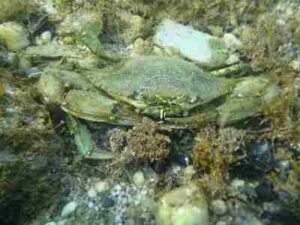
Bonnethead sharks are a type of tropical hammerhead shark that is unique among sharks, because they exhibit omnivorous behavior.
They occur in parts of the Pacific Ocean, where they primarily consume seagrass (which sometimes comprises up to 85-90% of their diet) and smaller aquatic animals, such as crabs and small fish. Their diet includes both plant and animal biomass, making them important both for the health of seagrass beds and maintaining the populations of lower animals.
Different species of sea turtles in the Pacific Ocean, including hawksbill, flatback, and leatherback turtles, are omnivores. These reptiles have diverse diets that include sea cucumbers, crustaceans, corals, seaweed, and fish. Sea turtles are essential in coral reef ecosystems where they control the populations of certain prey species, prevent algal overgrowth, and contribute to nutrient cycling.
Like saltwater crabs, many lobsters in the Pacific Ocean are omnivores that consume a variety of food items, including aquatic plants, algae, zooplankton, and mollusks. They help regulate the populations of smaller marine organisms, and contribute to the sustenance of energy transfer processes in coastal ecosystems.
The opaleye is a fish species that can be found along the North American Pacific coast. It primarily feeds on seaweeds which it supplements with animal biomass from smaller heterotrophs, making it an omnivorous marine organism. By grazing on seaweeds, opaleye fish help to regulate the growth of algal populations in rocky coastal habitats.
Five Omnivores in the Ocean
While the examples provided above focus on omnivores in the Pacific Ocean, omnivores are found in various marine ecosystems. Five omnivores commonly found in the ocean are; sea turtles, parrotfish, hermit crabs, lobsters, and sea urchins. Each of them is briefly highlighted below;
Sea turtles, including flatback turtles, are omnivores that consume seagrasses, algae, mollusks, zooplankton and other marine organisms.
Although their diet is dominated by autotrophic materials, parrotfish are omnivorous reef fish that feed on both algae and small invertebrates found on coral reefs.
Hermit crabs are scavenging omnivores that are known to consume detritus, dead animals, and algae, as well as small prey.
Some lobster species in the Pacific are omnivorous, and feed on a variety of organisms, including fish, mollusks, other crustaceans, sea urchins, detritus, and algae.
Lastly, sea urchins are omnivores that feed on microalgae, kelp, and detritus, contributing to the grazing of underwater habitats.
5). Decomposers: one of the Biotic Factors in the Pacific Ocean
Decomposers are critical components of marine ecosystems, that also occur in the Pacific Ocean. They have a central role to play in recycling organic waste matter, breaking down the remains of dead organisms, and releasing essential nutrients from these substrates, back into the ecosystem.
This section discusses some decomposers found in the Pacific Ocean as well as their contributions to the ecosystem.
Examples and Functions of Decomposers in the Pacific Ocean
Examples of decomposers in the Pacific Ocean are; bacteria, fungi, and detritivorous invertebrates like marine worms, echinoderms, some crustaceans and mollusks.
Bacteria are the most dominant decomposers in marine ecosystems [5], including the Pacific Ocean. They are responsible for breaking down various kinds of organic matter, such as dead marine organisms, feces, and granular detritus.
Bacteria play a critical role in the decomposition process, by transforming complex organic molecules into simpler products, and releasing nutrients like nitrogen, sulfur and phosphorus. These nutrients are essential for primary producers to carry out photosynthesis, thereby fueling the entire marine food web.
Fungi are another important group of decomposers in the Pacific Ocean. They contribute to the biodegradation of organic material by secreting enzymes that actively break down complex organic compounds. Fungi are particularly effective in nutrient cycling and the breakdown of submerged woody biomass and fibrous plant material.
Various species of marine worms, such as polychaetes, are also involved in breaking down organic matter on the ocean floor. They assist in the decomposition of remains of dead plants and animals, fecal matter, and organic debris that settles to the seabed. Their activities enhance local nutrient recycling, and lead to the aeration and modification of marine sediments, in which they create burrows that can provide habitats for other marine organisms.
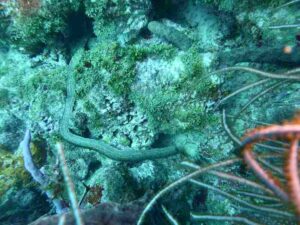
Echinoderms, including sea cucumbers and sea urchins, act as scavengers and detritivorous decomposers in marine ecosystems [8]. They feed on decaying organic materials, including animal and plant-derived detritus. The activities of these organisms, help to effectively manage and process organic material, thereby contributing to nutrient recycling in coastal and deep-sea environments.
Certain crustaceans, such as crabs, as well as mollusks like snails, also participate in decomposition processes. They feed on organic matter, thereby contributing to the breakdown of organic material into simpler forms. Their activities facilitate nutrient release into the water column.
In general, Pacific Ocean decomposers are critical in the maintenance of water quality, nutrient cycling, and supporting the overall health of regional marine ecosystems.
By degrading organic matter, they facilitate the release of essential nutrients back into the ecosystem, which then become available for photosynthetic utilization, to support the growth of phytoplankton and other autotrophic organisms. These producers, in turn, sustain the entire marine trophic hierarchy, from herbivores to apex predators.
*Sea Plants as Decomposers in the Ocean
Sea plants, or algae, are not typically considered decomposers in marine ecosystems. Instead, they are autotrophic primary producers, which utilize photosynthesis to convert sunlight into chemical energy and produce organic matter. However, when sea plants die or shed their components (like leaves), these organic materials can become viable substrates for decomposers like bacteria and fungi.
*Detritivores in the Ocean
Detritivores are organisms that feed on detritus, which comprises of decomposing plant and animal material.
In the ocean, detritivores are similar to decomposers in their roles, as they help to break down organic matter and recycle nutrients.
Some examples of detritivores in oceans include marine worms, amphipods, isopods and snails. They contribute to the process of decomposition by consuming detrital organic matter, and converting it into smaller particles that can be further processed by microbial decomposers like bacteria and fungi.
Trophic Interactions in the Pacific Ocean and their Role in Sustaining the Ecosystem
Trophic interactions in the Pacific Ocean are fundamental to the functionality and longterm sustainability of its diverse marine ecosystems.
These interactions involve the transfer of nutrients and energy resources, among different organisms at various trophic levels. Understanding trophic interactions is therefore crucial for evaluating the dynamics of both biotic and abiotic segments within this vast and ecologically rich ocean.
Below is a summary of trophic interactions in the Pacific at various levels, and their contributions to ecosystem sustenance.
Summary of Trophic Interactions Across the Pacific Hierarchical Structure
Processes like predation and herbivory are basic trophic interactions, that give rise to others like mutualism and commensalism. These feeding processes can be understood using a concise overview of the occupants and dynamics of Pacific trophic categories (which differs from trophic levels), as enumerated below;
1). Primary Producers (Autotrophs)
At the base of the food chain in the Pacific Ocean are primary producers or autotrophs, mainly represented by phytoplankton, seaweed and seagrasses. These organisms utilize sunlight as a basic energy source to perform photosynthesis, whereby carbon dioxide and nutrients are transformed into organic matter. This process provides the foundation for sustenance of all life in the ocean, by producing oxygen and serving as a primary source of food for herbivores.
2). Herbivores
Herbivores, including a variety of fish, abalones, and green sea turtles, are important, intermediate consumers in the Pacific Ocean.
They feed on primary producers, regulating their total biomass, and ensuring that they do not overgrow and deplete the available resources. For instance, abalones graze on kelp forests, preventing them from becoming too dense and creating opportunities for other species to thrive.
3). Carnivores
Carnivores occupy different niches in the Pacific Ocean, ranging from fish like the Pacific bluefin tuna to apex predators like sharks and orcas.
These organisms feed on herbivores, vulnerable carnivores, and even scavengers, thereby forming complex predator-prey relationships. For example, orcas are known to prey intensively on seals and sea lions [11], while tunas consume smaller herbivorous and omnivorous fish, regulating their populations and preventing overgrazing which could lead to depletion of autotrophs.
4). Scavengers and Decomposers
Scavengers, such as hermit crabs and some species of fish, play an important role in the removal of waste organic matter from the ocean floor. Their activities contribute to nutrient cycling and help to maintain water quality. Decomposers like fungi and bacteria further break down the partially-degraded organic materials left by detritivores, releasing essential nutrients back into the water column and sediments.
5). Apex Predators
Apex predators, like great white sharks, include mostly carnivores that occupy the highest trophic level in the Pacific Ocean, and have no predators above them (at least within their territory).
They exert a top-down influence on the entire ecosystem by regulating the populations of their prey species. In the absence of these apex predators, certain prey populations could explode, thereby disrupting the balance and resourcefulness of the ecosystem.
*Example of Pacific Trophic Interaction(s)
A classic example of trophic interaction in the Pacific Ocean involves the relationship between sea otters, sea urchins, and kelp macroalgae; where sea otters share a mutualistic dynamic with kelp.
Sea otters are keystone species that feed on sea urchins which, in turn, graze on kelp. When sea otters are present, they keep sea urchin populations in check, and prevent them from overgrazing and destroying kelp forests. This allows kelp to flourish and sustains the availability of habitat and food for a variety of other kelp-dependent species, including fish, microbes and macroscopic invertebrates.
*Contributions of Trophic Interactions to Ecosystem Sustenance in the Pacific
Trophic interactions in the Pacific Ocean contribute to the sustainability of marine ecosystems in several ways; which include its contributions to biodiversity, nutrient cycling, population control, and ecosystem resilience.
These interactions support a broad range of species, and help maintain species richness/biodiversity by preventing the dominance of a few species.
Trophic activities of microbial decomposers and detritivorous scavengers, ensure that nutrients are recycled within the ecosystem, thereby promoting the growth of primary producers and supporting higher trophic levels.
The act and process of predation help control the populations of prey species in the Pacific, preventing overgrazing or other forms of overexploitation of resources.
Lastly, trophic interactions increase the resilience of marine ecosystems to environmental changes and ecologic disturbances, by maintaining balanced and interconnected populations.
Understanding these trophic interactions is therefore essential for effective conservation efforts, and sustainable management of the Pacific Ocean's resources. Any disruption in trophic interactions can have far-reaching consequences for the vitality and stability of this ecosystem.
Conclusion
Biotic factors in the Pacific Ocean are;
1. Autotrophs/Producers
2. Herbivores
3. Carnivores
4. Omnivores
5. Decomposers
as well as Trophic Interactions among these groups
References
1). Adulyanukosol, K.; Poovachiranon, S. (2006). "Dugong (Dugong dugon) and seagrass in Thailand: Present status and future challenges " Available at: https://www.semanticscholar.org/paper/Dugong-(Dugong-dugon)-and-seagrass-in-Thailand%3A-and-Adulyanukosol-Poovachiranon/96c2686f87c135d1886c57045f7b5fd2e0618beb. (Accessed 23 September 2023).
2). Ansari, E.; Gadhia, M.; Ujjania, N. C. (2015). "Phytoplankton Diversity and Water Quality Assessment of ONGC Pond, Hazira." Available at: https://www.academia.edu/64447239/Phytoplankton_Diversity_and_Water_Quality_Assessment_of_ONGC_Pond_Hazira. (Accessed 23 September 2023).
3). Eklöf, J. S.; de la Torre-Castro, M.; Gullström, M.; Uku, J.; Muthiga, N.; Lyimo, T. L.; Bandeira, S. (2008). "Sea urchin overgrazing of seagrasses: A review of current knowledge on causes, consequences, and management " Estuarine Coastal and Shelf Science 79(4):569–580. Available at: https://doi.org/10.1016/j.ecss.2008.05.005. (Accessed 23 September 2023).
4). Ghosh, T.; Mishra, S. (2017). "How Does Photosynthesis Take Place in Our Oceans?" Frontiers for Young Minds 5(34). Available at: https://doi.org/10.3389/frym.2017.00034. (Accessed 23 September 2023).
5). Husain, R.; Vikram, N.; Yadav, G.; Kumar, D.; Pandey, S.; Patel, M.; Khan, N. A.; Hussain, T. (2022). "Microbial bioremediation of heavy metals by Marine bacteria." Development in Wastewater Treatment Research and Processes (pp.177-203). Available at: https://doi.org/10.1016/B978-0-323-85839-7.00014-1. (Accessed 23 September 2023).
6). Joseph, J.; Boopendranath, M. R.; Sankar, T. V.; Jeeva, C.; Kumar, R. (2008). "Harvest and Post-harvest Technology for Tuna (First Pages)." Society of Fisheries Technologists (India), Cochin. Available at: https://www.scribd.com/document/33109244/Harvest-and-Post-Harvest-Technology-for-Tuna. (Accessef 23 September 2023).
7). McKenzie, L. J.; Yoshida, R. L.; Aini, J. W.; Andréfouet, S.; Colin, P. L.; Cullen-Unsworth, L. C.; Hughes, A. T.; Payri, C. E.; Rota, M.; Shaw, C.; Skelton, P. A.; Tsuda, R. T.; Vuki, V. C.; Unsworth, R. K. F. (2021). "Seagrass ecosystems of the Pacific Island Countries and Territories: A global bright spot." Mar Pollut Bull. 2021 Jun;167:112308. Available at: https://doi.org/10.1016/j.marpolbul.2021.112308. (Accessed 23 September 2023).
8). Micael, J.; Alves, M. J.; Costa, A. C.; Jones, M. B. (2009). "Exploitation and conservation of echinoderms." Oceanography and Marine Biology 47. Available at: https://www.academia.edu/11746466/Exploitation_and_conservation_of_echinoderms. (Accessed 23 September 2023).
9). Shelamoff, V.; Layton, C.; Tatsumi, M.; Cameron, M. J.; Wright, J. T.; Johnson, C. R. (2019). "Ecosystem engineering by a canopy‐forming kelp facilitates the recruitment of native oysters." Restoration Ecology 27(6). Available at: https://doi.org/10.1111/rec.13019. (Accessed 23 September 2023).
10). Sievert, S.; Vetriani, C. (2012). "Chemoautotrophy at Deep-Sea Vents: Past, Present, and Future." Oceanography 25(1):218-233. Available at: https://doi.org/10.5670/oceanog.2012.21. (Accessed 23 September 2023).
11). Wade, P. R.; Ver Hoef, J. M.; DeMaster, D. P. (2009). "Mammal-eating killer whales and their prey—Trend data for pinnipeds and sea otters in the North Pacific Ocean do not support the sequential megafaunal collapse hypothesis." Marine Mammal Science 25(3):737 - 747. Available at: https://doi.org/10.1111/j.1748-7692.2009.00282.x. (Accessed 23 September 2023).
